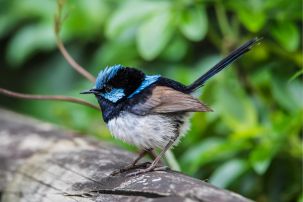Lesson summary
In this activity students investigate what physical features animals might need to help them adapt to climate change. Students look at an animal that is local to their area, and compare it to other similar animals in other parts of Australia and the world. They select adaptations from these similar animals that they believe would help their animal cope with climate change. Students present their ideas to the class.
Learning intentions:
Students will...
- understand that animals have evolved physical features that help them survive in their habitat.
- understand that similar animals in different habitats have developed different adaptations according to the needs of their habitat.
- recognise that climate change may alter habitats.
- recognise that changes to habitats can affect that animals that live in those habitats.
Lesson guides and printables
Lesson details
Curriculum mapping
Australian Curriculum content descriptions:
Year 5 Science:
- Living things have structural features and adaptations that help them to survive in their environment (ACSSU043)
- With guidance, plan appropriate investigation methods to answer questions or solve problems (ACSIS086)
- Communicate ideas, explanations and processes in a variety of ways, including multi-modal texts (ACSIS093)
Year 6 Science:
- The growth and survival of living things are affected by the physical conditions of their environment (ACSSU094)
- Sudden geological changes or extreme weather conditions can affect Earth’s surface (ACSSU096)
- Communicate ideas, explanations and processes in a variety of ways, including multi-modal texts (ACSIS110)
Syllabus outcome: ST3-4WS, ST3-10LW, ST3-11LW, ST3-9ES.
Time required: 60 mins
Level of teacher scaffolding: Medium – facilitate discussion, oversee activity and presentations.
Resources required
- Internet access
- student worksheet
- drawing materials or computer-based image editing or creating programs (e.g. Photoshop)
Additional info
This is an original Cool.org lesson. Facts and figures in these lessons may have changed since this lesson was published. We always endeavour to update our resources in a timely manner, but if you see an error or issue in our resources please get in touch with us.


Welcome back!
Don't have an account yet?
Log in with:
By signing up to Cool.org you consent and agree to Cool's privacy policy to
store, manage and process your personal information. To read more, please see
our privacy policy here(Opens in new tab).
Create your free Cool.org account.
Many of our resources are free, with an option to upgrade to Cool+ for premium content.
Already have an account?
Sign up with:
By signing up to Cool.org you consent and agree to Cool's privacy policy to
store, manage and process your personal information. To read more, please see
our privacy policy here(Opens in new tab).